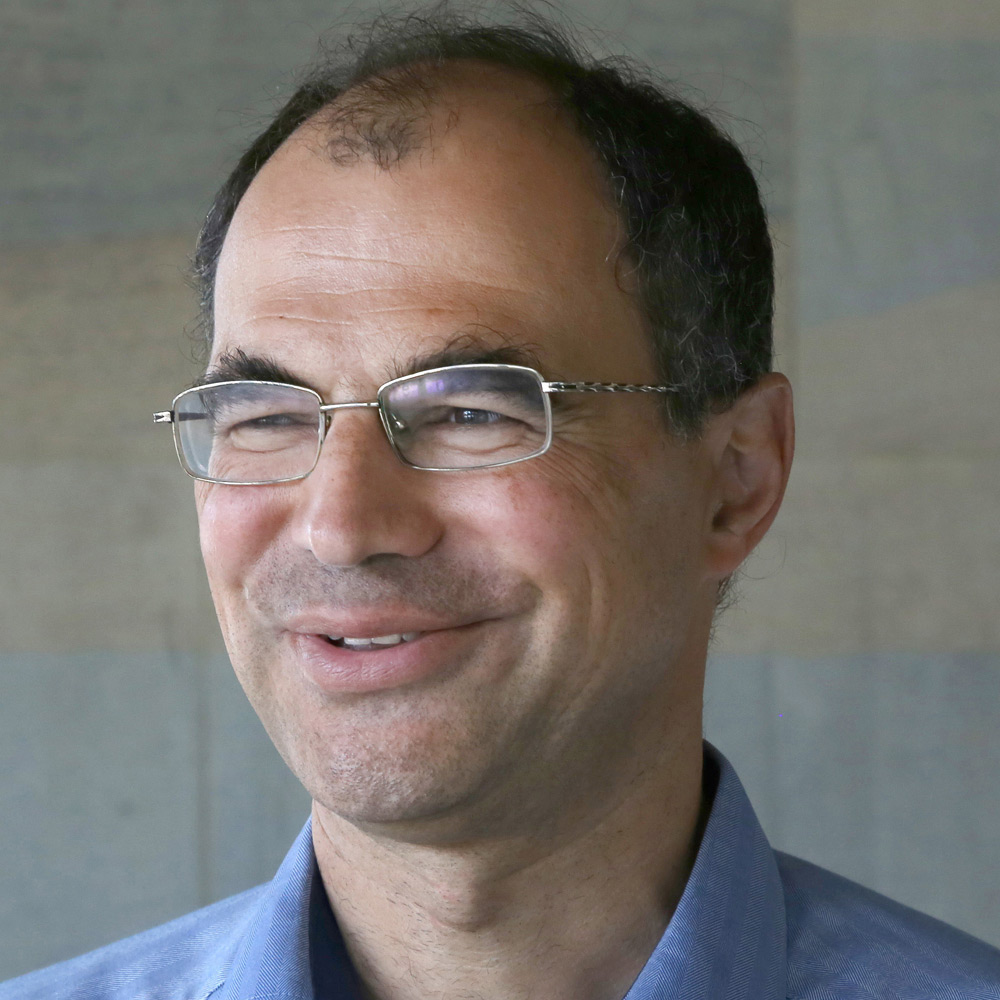Dr Alexei Vernitski

-
Email
asvern@essex.ac.uk -
Location
STEM 5.15, Colchester Campus
Profile
Biography
My current research is mostly in applying artificial intelligence to mathematical problems. The types of artificial intelligence that I use include reinforcement learning and deep learning. The types of mathematical problems that I research are in knot theory and in algebra (for example, braid theory). I am also interested in mathematics education, especially increasing motivation of learners of mathematics. Currently I supervise two PhD students in mathematics education. Previously, most of my research was in universal algebra. My PhD is in semigroup theory. I supervised one PhD student (Dr Zsofia Juhasz) in universal algebra (semigroup theory). Also I conducted research in applications of mathematics to computer science. I supervised two PhD students in this area (Dr Gokce Caylak Kayaturan and Dr Laura Carrea). Before starting work at Essex, I worked as a programmer in the financial sector and as a lecturer in computer science.
Research and professional activities
Research interests
Applying algebra (especially semigroups) to study knots, graphs etc.
My plans include 1) applying semigroups to study bounded rationality and, in particular, the negotiations scenario known as the repeated prisoner's dilemma; 2) using algebra to study certain classes of knots related to so-called rational tangles.
Mathematical education; in particular, increasing motivation of learners of mathematics
Inspired by Carol Dweck's growth mindsets and Jo Boaler's mathematical mindsets, I research how this creative and nurturing approach can help learners of mathematics.
Machine learning in mathematics; reinforcement learning applied to knot theory
One of my current interests is combining mathematics and new machine learning technology to enable the computer to manipulate mathematical objects.
Deep learning and reinforcement learning, applied to mathematical problems
Current research
Machine learning for recognising tangled 3D objects
Teaching and supervision
Current teaching responsibilities
-
Matrices and Complex Numbers (MA114)
-
Linear Algebra (MA201)
Previous supervision

Degree subject: Mathematics
Degree type: Doctor of Philosophy
Awarded date: 13/3/2025

Degree subject: Computer Science
Degree type: Doctor of Philosophy
Awarded date: 30/9/2024

Degree subject: Mathematics
Degree type: Doctor of Philosophy
Awarded date: 29/6/2018

Degree subject: Mathematics
Degree type: Master of Science (by Dissertation)
Awarded date: 22/9/2014

Degree subject: Computing and Electronic Systems
Degree type: Doctor of Philosophy
Awarded date: 26/7/2013
Publications
Publications (6)
Oliver, T. and Vernitski, A., (2025). Divisibility rules for integers presented as permutations
Fernandes, V. and Vernitski, A., (2024). Groups of permutations preserving orientation (parity) of subsets of a fixed size, and related monoids
Vernitski, A., (2024). Gauss diagrams as cubic graphs: The choice of the Hamiltonian cycle matters
Lisitsa, A., Salles, M. and Vernitski, A., (2023). Machine learning discovers invariants of braids and flat braids
Lisitsa, A., Nie, Z. and Vernitski, A., (2023). Automated reasoning for proving non-orderability of groups
Lisitsa, A., Lopatkin, V. and Vernitski, A., (2022). Describing realizable Gauss diagrams using the concepts of parity or bipartate graphs
Journal articles (35)
Kayaturan, GÇ. and Vernitski, A., (2025). Encoding Paths with Binary Arrays in a King’s Graph for Error-Free Data Transmission. Annals of Mathematics and Artificial Intelligence
Lisitsa, A., Nie, Z. and Vernitski, A., (2025). Automated reasoning for proving non-orderability of groups. Journal of Automated Reasoning. 69 (3)
Lisitsa, A. and Vernitski, A., (2024). Semigroups, keis and groups induced by knot diagrams: an experimental investigation with automated reasoning. Semigroup Forum. 109 (1), 186-193
Lisitsa, A., Salles, M. and Vernitski, A., (2024). Machine learning discovers invariants of braids and flat braids. Advances in Applied Clifford Algebras. 34 (5)
Lisitsa, A. and Vernitski, A., (2024). Counting graphs induced by Gauss diagrams and families of mutant alternating knots. Examples and Counterexamples. 6, 100162-100162
Higgins, PM. and Vernitski, A., (2024). Correction to: Orientation preserving and orientation reversing mappings: a new description. Semigroup Forum. 109 (3), 763-764
Lisitsa, A., Lopatkin, V. and Vernitski, A., (2023). Describing realizable gauss diagrams using the concepts of parity or bipartite graphs. Journal of Knot Theory and Its Ramifications. 32 (10)
Higgins, P. and Vernitski, A., (2022). Orientation-preserving and orientation-reversing mappings: a new description. Semigroup Forum. 104 (2), 509-514
Vernitski, A., (2022). A blind spot in undergraduate mathematics: The circular definition of the length of the circle, and how it can be turned into an enlightening example. MSOR Connections. 20 (3), 85-90
Daly, I., Bourgaize, J. and Vernitski, A., (2019). Mathematical mindsets increase student motivation: Evidence from the EEG. Trends in Neuroscience and Education. 15, 18-28
East, J. and Vernitski, A., (2018). Ranks of ideals in inverse semigroups of difunctional binary relations. Semigroup Forum. 96 (1), 21-30
Vernitski, A., Tunsi, L., Ponchel, C. and Lisitsa, A., (2018). Dihedral semigroups, their defining relations and an application to describing knot semigroups of rational links. Semigroup Forum. 97 (1), 75-86
Vernitski, A., (2017). Describing semigroups with defining relations of the form xy=yz xy and yx=zy and connections with knot theory. Semigroup Forum. 95 (1), 66-82
Juhász, Z. and Vernitski, A., (2016). Semigroups with operation-compatible Green’s quasiorders. Semigroup Forum. 93 (2), 387-402
Carrea, L., Vernitski, A. and Reed, MJ., (2016). Yes-no Bloom filter: A way of representing sets with fewer false positives
Yang, X., Vernitski, A. and Carrea, L., (2016). An approximate dynamic programming approach for improving accuracy of lossy data compression by Bloom filters. European Journal of Operational Research. 252 (3), 985-994
Pride, SJ., Vernitski, A., Wong, KB. and Wong, PC., (2016). Conjugacy and Other Properties of One-Relator Groups. Communications in Algebra. 44 (4), 1588-1598
Carrea, L., Vernitski, A. and Reed, M., (2014). Optimized hash for network path encoding with minimized false positives. Computer Networks. 58 (1), 180-191
Vernitski, A. and Pyatkin, A., (2012). Astral graphs (threshold graphs), scale-free graphs and related algorithmic questions. Journal of Discrete Algorithms. 12, 24-28
Juhász, Z. and Vernitski, A., (2011). Using filters to describe congruences and band congruences of semigroups. Semigroup Forum. 83 (2), 320-334
Juhasz, Z. and Vernitski, A., (2011). Filters in (Quasiordered) Semigroups and Lattices of Filters. Communications in Algebra. 39 (11), 4319-4335
Vernitski, A., (2009). Inverse subsemigroups and classes of finite aperiodic semigroups. Semigroup Forum. 78 (3), 486-497
Vernitski, A., (2009). One-side Nielsen transformations in free groups. International Journal of Algebra and Computation. 19 (07), 855-871
Vernitski, A., (2008). On Using the Join Operation to Define Classes of Algebras. Communications in Algebra. 36 (3), 1088-1096
Vernitski, A., (2008). Ordered and J-trivial semigroups as divisors of semigroups of languages. International Journal of Algebra and Computation. 18 (07), 1223-1229
Vernitski, A., (2007). A Generalization of Symmetric Inverse Semigroups. Semigroup Forum. 75 (2), 417-426
Vernitski, A., (2006). Can Unbreakable Mean Incomputable?. The Computer Journal. 49 (1), 108-112
Vernitski, A., (2005). Russian revolutionaries and English sympathizers in 1890s London. Journal of European Studies. 35 (3), 299-314
Vernitski, A., (2004). Finite quasivarieties and self-referential conditions. Studia Logica. 78 (1-2), 337-348
Vernitski, A., (2002). Women work, men muse: Gender roles in Platonov's articles and short stories. Essays in Poetics. 27, 162-173
McAlister, DB., Stephen, JB. and Vernitski, A., (2002). Embedding ℑn in a 2-generator inverse subsemigroup of ℑn+2. Proceedings of the Edinburgh Mathematical Society. 45 (1), 1-4
Vernitski, AS., (2001). Studying semigroups of mappings using quasi-identities. Semigroup Forum. 63 (3), 387-395
Repnitskiǐ, VB. and Vernitskiǐ, AS., (2000). Semigroups of order-preserving mappings. Communications in Algebra. 28 (8), 3635-3641
Vernitskii, A., (1999). Semigroups of order-decreasing graph endomorhpisms. Semigroup Forum. 58 (2), 222-240
Vernitskii, AS., (1999). The finite basis problem for the semigroups of order-preserving mappings. Proceedings of the Royal Society of Edinburgh: Section A Mathematics. 129 (3), 641-647
Book chapters (1)
Lisitsa, A. and Vernitski, A., (2017). Automated Reasoning for Knot Semigroups and $$\pi $$ π -orbifold Groups of Knots. In: Lecture Notes in Computer Science. Springer International Publishing. 3- 18. 9783319724522
Conferences (16)
Lisitsa, A. and Vernitski, A., (2024). On strong anti-learning of parity
Armani, F., Daly, I., Vernitski, A., Gillmeister, H. and Scherer, R., (2024). Maths Anxiety and cognitive state monitoring for neuroadaptive learning systems using electroencephalography
Lisitsa, A., Salles, M. and Vernitski, A., (2023). Supervised Learning for Untangling Braids
Khan, A., Lisitsa, A. and Vernitski, A., (2022). Training AI to Recognize Realizable Gauss Diagrams: The Same Instances Confound AI and Human Mathematicians
Khan, A., Vernitski, A. and Lisitsa, A., (2022). Untangling Braids with Multi-Agent Q-Learning
Khan, A., Vernitski, A. and Lisitsa, A., (2022). Reinforcement learning algorithms for the Untangling of Braids
Khan, A., Lisitsa, A. and Vernitski, A., (2021). Gauss-Lintel, an Algorithm Suite for Exploring Chord Diagrams
Fish, A., Lisitsa, A. and Vernitski, A., (2018). Visual Algebraic Proofs for Unknot Detection
Fish, A., Lisitsa, A. and Vernitski, A., (2018). Towards human readability of automated unknottedness proofs
Kayaturan, GC. and Vernitski, A., (2017). Encoding Shortest Paths in Triangular Grids for Delivery Without Errors
Karapetyan, D. and Vernitski, A., (2017). Efficient adaptive implementation of the serial schedule generation scheme using preprocessing and bloom filters
Kayaturan, GC. and Vernitski, A., (2016). Routing in hexagonal computer networks: How to present paths by Bloom filters without false positives
Kayaturan, GÇ. and Vernitski, A., (2016). A Way of Eliminating Errors When Using Bloom Filters for Routing in Computer Networks
Krol, K., Papanicolaou, C., Vernitski, A. and Sasse, MA., (2015). “Too Taxing on the Mind!” Authentication Grids are not for Everyone
Vernitski, A., (2013). Authentication grid
Peng, S., Nejabati, R., Escalona, E., Simeonidou, D., Anastasopoulos, M., Georgakilas, K., Tzanakaki, A. and Vernitski, A., (2012). Performance modelling and analysis of dynamic virtual optical network composition
Reports and Papers (8)
Lisitsa, A., Salles, M. and Vernitski, A., (2022). An application of neural networks to a problem in knot theory and group theory (untangling braids)
Khan, A., Lisitsa, A. and Vernitski, A., (2021). Experimental Mathematics Approach to Gauss Diagrams Realizability
Khan, A., Lisitsa, A., Lopatkin, V. and Vernitski, A., (2021). Circle graphs (chord interlacement graphs) of Gauss diagrams: Descriptions of realizable Gauss diagrams, algorithms, enumeration
Vernitski, A., (2021). A blind spot in undergraduate mathematics: The circular definition of the length of the circle, and how it can be turned into an enlightening example
Higgins, PM. and Vernitski, A., (2020). A new formulation of the semigroup of orientation-preserving and orientation-reversing mappings
Kayaturan, GC. and Vernitski, A., (2018). Encoding shortest paths in graphs assuming the code is queried using bit-wise comparison
Vernitski, A., (2015). An invariant of scale-free graphs
Vernitski, A., (2015). A simple technique for choosing and managing secure passwords: passwords with a random on-paper part
Grants and funding
2019
Machine learning for recognising tangled 3D objects
Leverhulme Trust
2018
Reducing socio-economic inequalities in HE participation: the role of information, peers and mindset
Office for Students
2016
Support of collaborative research
London Mathematical Society